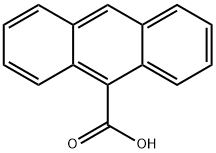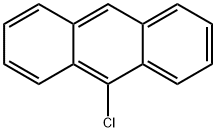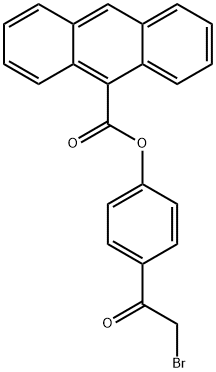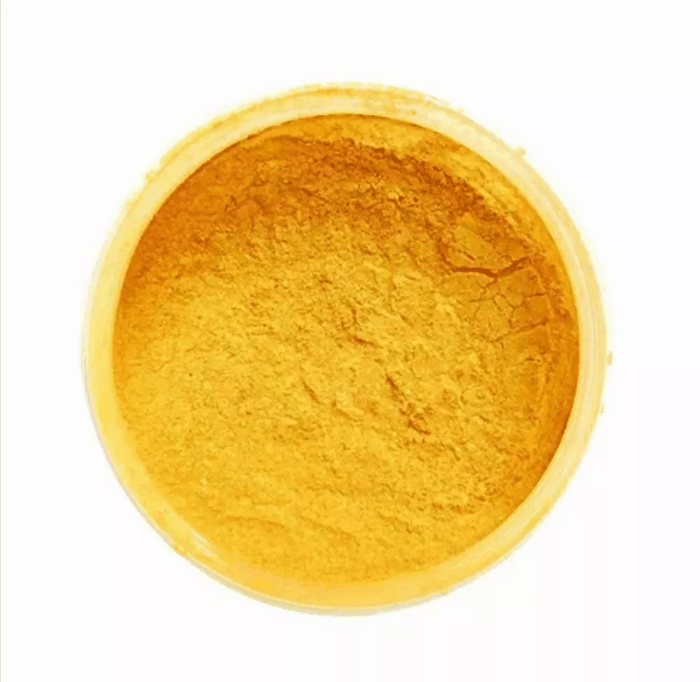9-Anthracenecarboxylic acid
Synonym(s):9-Anthroic acid
- CAS NO.:723-62-6
- Empirical Formula: C15H10O2
- Molecular Weight: 222.24
- MDL number: MFCD00001257
- EINECS: 211-964-9
- SAFETY DATA SHEET (SDS)
- Update Date: 2025-12-25 11:16:34

What is 9-Anthracenecarboxylic acid?
Chemical properties
yellow powder
The Uses of 9-Anthracenecarboxylic acid
Anthracene-9-carboxylic acid is a Cl- transport inhibitor with a moderate to strong inhibitory action on PKA activated cardiac IcI.
What are the applications of Application
9-AC is a chloride transport inhibitor with moderate to strong inhibitory action on PKA activated cardiac IcI
Definition
ChEBI: An anthroic acid carrying the carboxy substituent at position 9.
Synthesis Reference(s)
Journal of the American Chemical Society, 70, p. 1079, 1948 DOI: 10.1021/ja01183a061
Biological Activity
Cl - transport inhibitor with a moderate to strong inhibitory action on PKA activated cardiac I cI .
Safety Profile
Moderately toxic byintraperitoneal route. Mutation data reported. Whenheated to decomposition it emits acrid smoke andirritating vapors.
Purification Methods
Crystallise the acid from EtOH. It is fluorescent in EtOH. [Beilstein 9 IV 2671.]
Properties of 9-Anthracenecarboxylic acid
| Melting point: | 213-217 °C (lit.) |
| Boiling point: | 323.41°C (rough estimate) |
| Density | 1.1404 (rough estimate) |
| refractive index | 1.6600 (estimate) |
| storage temp. | Sealed in dry,Room Temperature |
| solubility | H2O: soluble |
| form | Solid |
| pka | pK1: 3.65 (25°C) |
| color | Yellow |
| Water Solubility | insoluble |
| BRN | 1875336 |
| CAS DataBase Reference | 723-62-6(CAS DataBase Reference) |
| NIST Chemistry Reference | 9-Anthroic acid(723-62-6) |
| EPA Substance Registry System | 9-Anthracenecarboxylic acid (723-62-6) |
Safety information for 9-Anthracenecarboxylic acid
| Signal word | Warning |
| Pictogram(s) |
 Exclamation Mark Irritant GHS07 |
| GHS Hazard Statements |
H315:Skin corrosion/irritation H319:Serious eye damage/eye irritation H335:Specific target organ toxicity, single exposure;Respiratory tract irritation |
| Precautionary Statement Codes |
P261:Avoid breathing dust/fume/gas/mist/vapours/spray. P264:Wash hands thoroughly after handling. P264:Wash skin thouroughly after handling. P280:Wear protective gloves/protective clothing/eye protection/face protection. P304+P340:IF INHALED: Remove victim to fresh air and Keep at rest in a position comfortable for breathing. P305+P351+P338:IF IN EYES: Rinse cautiously with water for several minutes. Remove contact lenses, if present and easy to do. Continuerinsing. P405:Store locked up. |
Computed Descriptors for 9-Anthracenecarboxylic acid
| InChIKey | XGWFJBFNAQHLEF-UHFFFAOYSA-N |
9-Anthracenecarboxylic acid manufacturer
JSK Chemicals
3Y
Phone:+91-9879767984
Whatsapp: +91-9879767970
product: 9-Anthracenecarboxylic acid, 98% 99%
New Products
Indole Methyl Resin tert-butyl 9-methoxy-3-azaspiro[5.5]undecane-3-carboxylate Boc-His(Boc)-OH 2-CTC Resin 4-Chloro-7-tosy1-7Hpyrrolo[2,3-d]pyrimidine 5,7-Dibromo-1H-indole 2,5-dichloro-N-hydroxy-4,6-dimethylpyridine-3-carboximidamide 2,2-Dimethoxy-7-azaspiro[3.5]nonane hydrochloride 4-chloromethyl-5-methyl-1,3-dioxol-2-one (DMDO-Cl) R-2-BENZYLOXY PROPIONIC ACID 1,1’-CARBONYLDIIMIDAZOLE 1,1’-CARBONYLDI (1,2-4 TRIAZOLE) N-METHYL INDAZOLE-3-CARBOXYLIC ACID 4-((2-hydroxyethyl)thio)benzoic acid 1-(TERT-BUTOXYCARBONYL)-2-PYRROLIDINONE Methyl 6-methylnicotinate 3-Pyridineacrylic acid tert-Butyl carbazate TETRAHYDRO-2H-PYRAN-3-OL 2-((4-morpholinophenylamino) (methylthio) methylene) malononitrile 3-(4-morpholinophenylamino)-5-amino-1H-pyrazole-4-carbonitrile 2,4-dihydroxybenzaldehyde 1,3-Diethyl-1,3-Diphenylurea Methyl 2-methylquinoline-6-carboxylateRelated products of tetrahydrofuran








You may like
-
 723-62-6 9-ANTHRACENECARBOXYLIC ACID 98%View Details
723-62-6 9-ANTHRACENECARBOXYLIC ACID 98%View Details
723-62-6 -
 9-Anthracenecarboxylic acid, 98% 99%View Details
9-Anthracenecarboxylic acid, 98% 99%View Details
723-62-6 -
 9-Anthracenecarboxylic Acid (purified by sublimation) CAS 723-62-6View Details
9-Anthracenecarboxylic Acid (purified by sublimation) CAS 723-62-6View Details
723-62-6 -
 Anthracene-9-carboxylic acid, 99% CAS 723-62-6View Details
Anthracene-9-carboxylic acid, 99% CAS 723-62-6View Details
723-62-6 -
 9-Anthracenecarboxylic acid CAS 723-62-6View Details
9-Anthracenecarboxylic acid CAS 723-62-6View Details
723-62-6 -
 9 A C (280 Ml)View Details
9 A C (280 Ml)View Details
723-62-6 -
 Pyridine 99.5% HPLC /UV SpectroscopyView Details
Pyridine 99.5% HPLC /UV SpectroscopyView Details
110-86-1 -
 Thiourea 99% ARView Details
Thiourea 99% ARView Details
62-56-6
Statement: All products displayed on this website are only used for non medical purposes such as industrial applications or scientific research, and cannot be used for clinical diagnosis or treatment of humans or animals. They are not medicinal or edible.
